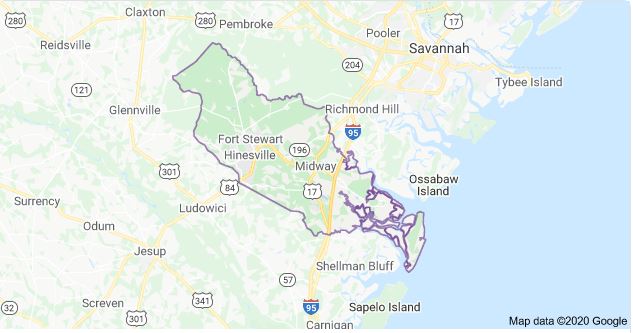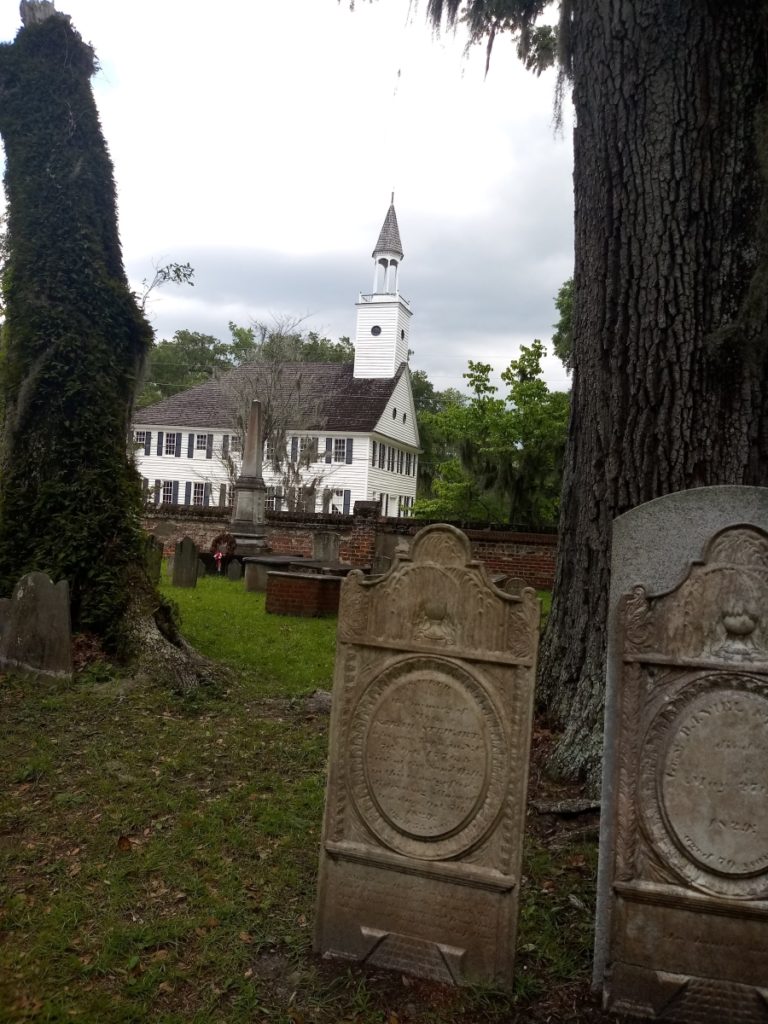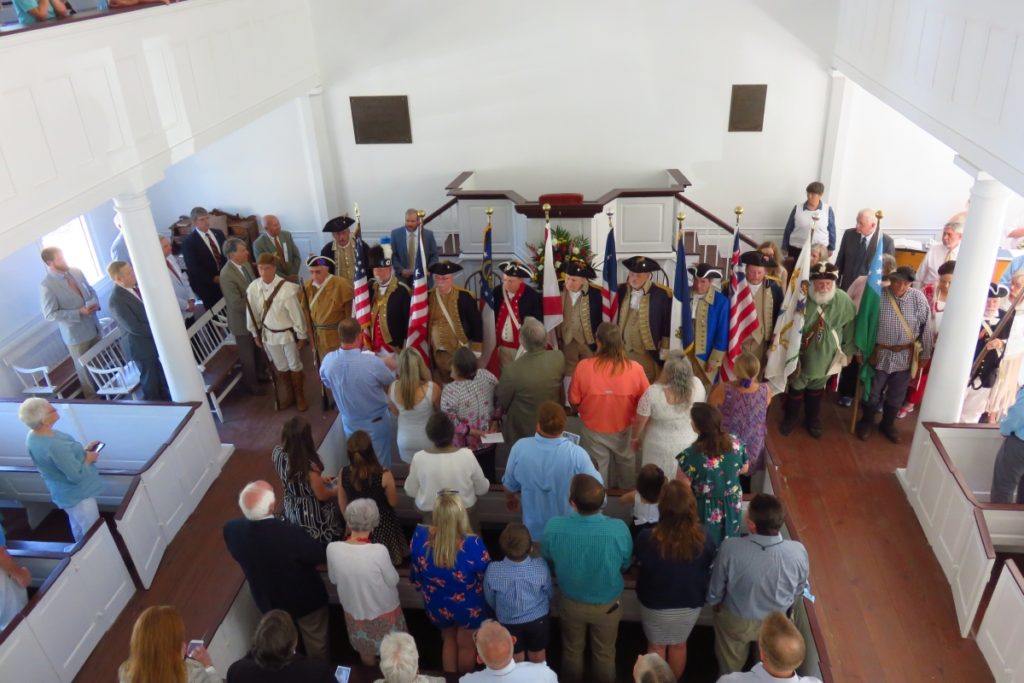Like most people, many of my ancestors had great tragedies in their lives. For some reason, my 2d great-grandmother, Emma Shave Ashmore, is the one whose life most moves me, and makes me want to memorialize her.

Here’s what I know, and suppose, about Emma’s life. She was born around 1835 to William Richard Shave (1794-1856) and Mary Shave (1793-?) in Liberty County, Georgia, near the Georgia coast. Her mother Mary was “Mrs. Mary Shave” when she married William, so had been married to a Shave previously. I suspect that she was the Mary Ihly who had married William’s brother Aaron Samuel Shave in 1808, but can’t prove it yet. Emma was the last of their six children. I hope she was spoiled as the baby by her three older sisters and two older brothers.

Life in Liberty County before the Civil War revolved around the Midway Congregational Church, which had been founded in 1752 by a group of wealthy planters who had migrated from Dorchester, South Carolina, with the people they were enslaving, as soon as Georgia dropped its laws prohibiting slavery in the colony. This group was descended from Puritans who had emigrated from England to Massachusetts in the early 1600s, and from there to South Carolina in the late 1600s, then to Georgia. Emma’s great-grandfather, John Shave, was in the initial group who established the town of Midway in Liberty County and the Midway Congregational Church during their 1750s migration. She likely grew up with a strong sense of place, of belonging to that particular place. Her family inhabited an area still called Shavetown today, north of the Midway Church on Highway 17, which used to be called the “King’s Highway.”

The Midway Church building, which had been burned by the British during the Revolutionary War, was rebuilt in 1792 and that building still stands. I’ll attend their annual Homecoming this year, and think about Emma being married in that beautifully simple space in January 1857, with her extended family probably watching from the white and dark wooden pews.
Sadly, her father William was not watching; he had died the previous month. Was the wedding already scheduled when he died, or did it take place because she needed the security provided a woman by marriage then? If the latter, it was a foreshadowing of things to come.
She married James S. Ashmore, whose father Strong Ashmore was named after the first Ashmore in Midway, his great-grandfather Strong Ashmore, one of the South Carolinians to receive land grants in the Midway settlement in the 1750s. James’ father Strong had been dead for almost 10 years when James married Emma, so they were both without a father’s guidance and protection. His mother Caroline Hendley Ashmore and his only sibling, brother John Ashmore, presumably attended the ceremony
Emma and James quickly had two daughters, Clifford Henrietta and Mary Claudia. James was what was described as a planter, meaning he had enough land to be comfortably well off. In 1860 he had $900 worth of real estate and $1100 of personal estate, not bad for a 27-year-old, though his neighbors were much wealthier. He owned a 60-year-old enslaved man, Saul, inherited by James’ father Strong from his father, John Ashmore. [See endnote for more information about Saul.]
Then came the Civil War. James enlisted in 1861 and served during the entire War. Emma had their only son in September 1864. Imagine the fear she must have felt, having a child in the fall of 1864 on the path between Atlanta and Savannah. Atlanta had already fallen — James, his brother John, and his uncle, Joseph Ashmore, had fought in the Battle of Atlanta that summer as members of the “Liberty Volunteers,” Company E (and later H), 25th Infantry Regiment, C.S.A. — and Sherman’s Army would be in Liberty County by December. Emma awaited their arrival with her three small children and her mother.
I don’t know what happened to Emma herself when the Union Army came to Liberty County, but I do know that the Union soldiers set up camp inside the Midway Congregational Church, so were just down the road. An army has to eat, and the Union troops foraged far and wide, taking everything they could find. They were equal opportunity foragers, taking everything from both white and black. Most people who could do so, fled. In addition, Mary Elizabeth Ashmore, wife of James’ uncle Joseph, died that December.
It must have been a terrible time for Emma. Then, it got worse. News came that James had died in Tennessee, apparently of stomach problems. Emma had three small children. Her uncle-in-law Joseph, more than 15 years her senior, was now a widower. The solution probably seemed obvious, and they married that April, 1865. Emma was grieving her husband, caring for a 7-month-old child, and newly remarried to a man who was grieving his recently deceased wife of at least 25 years. She was now stepmother to six mostly grown children, and Liberty County was economically and socially devastated after the War.
But life goes on. Emma had two more children, Josiah Warren, born 1867, and Arthur Emma, born 1869. Was Arthur dear to Emma’s heart, since she gave him her own name as a middle name? I’d like to think so, because he was my great-grandfather. Unfortunately, he had little chance to know Emma, as she died in June 1871, at age 36, when he was not even two years old. I suspect this is why no stories about or pictures of Emma have come down in my family.
Emma’s death must have changed their blended family forever. James’ brother John, known as Jackie, took the three children she had with James to nearby Effingham County to raise. John never married; he took care of his mother, her deaf half-sister sister Mary Findley, and Emma’s three children.
Joseph remarried for the third time six months later and moved to the nearby city of Hinesville, where he was elected the probate court judge in 1876, a position he held the rest of his life. When he died in 1889 at 80, the Savannah Morning News described him as “one of the oldest and most highly respected citizens of Liberty County,” and said, “For uprightness of conduct, devotion to duty and sterling character he had few peers. He was one of the old landmarks.” His life’s tragedies obviously affected him, though. His niece, Mary S. Carter Feaster, who had adored him, wrote in 1878, “I thought I had the best, the loveliest Uncle in the whole big world, but since this marriage, I just look upon him as lost to us all. He is living in Hinesville. We hardly ever see him.”
And Emma’s two children with Joseph? Josiah and my 2d great-grandfather Arthur went to live with their half-sister, Catherine (Nellie) Ashmore Andrews, wife of wheelwright Hartwell Andrews, next door to Mary S. Carter Feaster, near Shavetown. Josiah had serious mental health issues, and wound up dying at 58 in the Georgia state insane asylum in Milledgeville, having lived there at least the last 18 years of his life. Arthur escaped to the river, and became a steamboat captain on the Altamaha, ending his career as the last captain of the ferry boat between Brunswick and Jekyll Island before the Jekyll Island causeway was built in the 1940s.
I know a good bit about Emma’s short life, but nothing about what she was really like. Aspects of her personality, her character, her fears, loves, and preferences are lost to me. Of all my ancestors, she is the one I would most like to know these things about.
I like to think that Emma would be happy that she is remembered. I have a public family tree, “George Ashmore Family Tree,” on Ancestry.com (username: sashmore135), where I have the details of her and her family’s lives. If anyone has further information about her or the family, I can be reached there or at jnscole@yahoo.com.
End Note:
Saul, the African-American man enslaved by the Ashmore family, took the name Saul Jones at Emancipation. For more about his life and the lives of the people enslaved by John Ashmore, click here.
Sources used in researching Emma’s life:
U.S. federal censuses for Liberty County, Georgia
Georgia marriage records on Ancestry.com
Obituary for Joseph Ashmore, Savannah Morning News, December 16, 1889, transcribed from microfilm at the Savannah Live Oaks library on Bull Street.
Armistead, Gloria, Compilation and transcription of letters of Mary S. Carter Feaster, 1877-1908, unpublished.
Henderson, Lillian, “Roster of the Confederate Soldiers of Georgia 1861-1865,” Vol III., Longino & Porter, Inc, Hapeville, Georgia. [Accessed digitally in 2020 at https://babel.hathitrust.org/cgi/pt?id=wu.89059402263&view=1up&seq=7.]
Stacy, James, “History and Published Records of the Midway Congregational Church, Liberty County, Georgia,” The Reprint Company, Spartanburg, South Carolina, 1979 (compilation of two sources published in 1903 and 1894 by James Stacy). [Available for purchase at the Midway Museum in Midway, Georgia.]


I am simply waiting to purchase my copy of one of your books – autographed please. Superb reading. Thanks for always sharing your words with us.